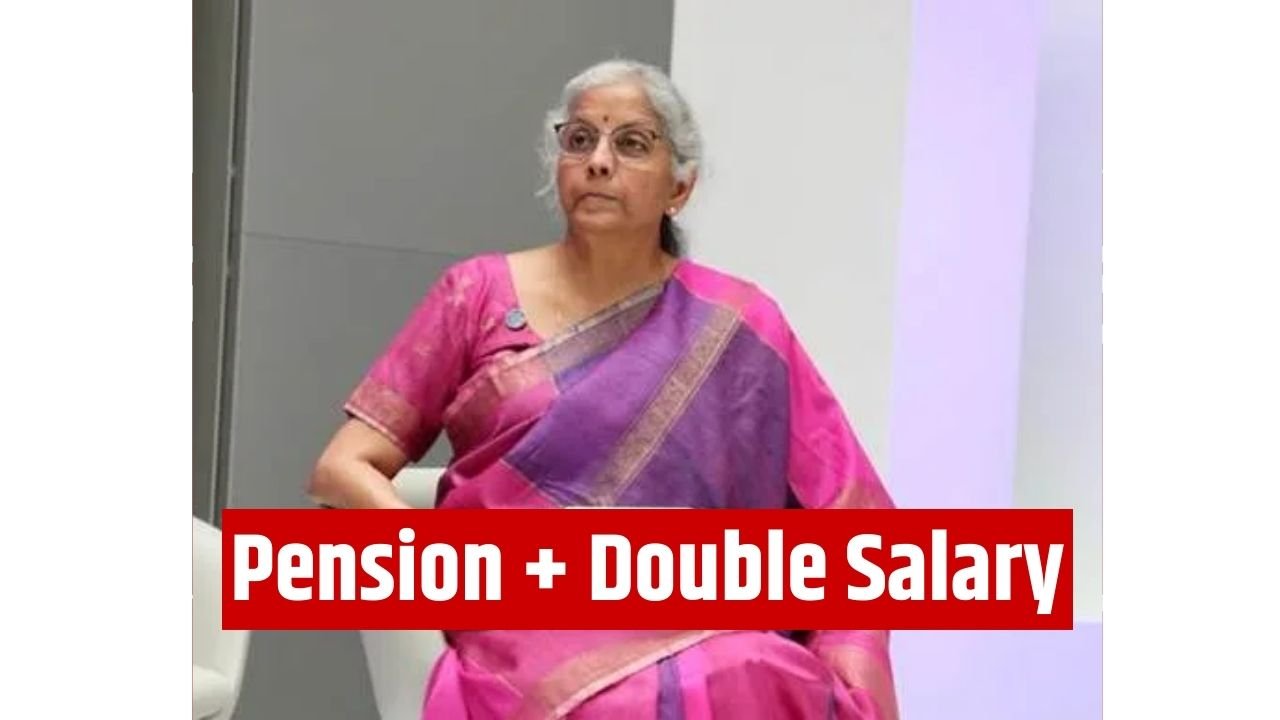EPFO Announces Major Reforms: In a significant move aimed at enhancing financial security for private-sector employees, the Employees’ Provident Fund Organisation (EPFO) has proposed major changes to the pension and salary structure under the EPF Act. These reforms are expected to provide better post-retirement benefits and improved in-hand salaries for millions of workers across India.
What Are the Key Changes Proposed by EPFO?
The EPFO’s new decision focuses on two major aspects:
- Higher Monthly Pension – The pension calculation formula will be revised to offer increased payouts based on the employee’s last drawn salary, replacing the earlier 60-month average.
- Restructured Salary System – A new “double salary” concept will be introduced, where the basic salary component is increased, leading to higher PF contributions and, consequently, larger pension benefits.
These changes are designed to bring private-sector employees closer to the retirement benefits enjoyed by government employees, ensuring long-term financial stability.
Who Stands to Benefit from These Reforms?
The proposed changes will primarily benefit:
- Private-sector employees with long-term EPF contributions.
- Workers earning above ₹15,000 who have opted for higher pensions under the Employees’ Pension Scheme (EPS).
- Employees nearing retirement with 10–20 years of service.
- Contractual and temporary workers enrolled under EPFO.
- Companies complying with EPFO contribution regulations.
This initiative aims to formalize retirement security for a broader workforce, ensuring more employees receive adequate post-retirement income.
Key Highlights of the EPFO Reforms
- Increased Pension Payouts – Monthly pensions could rise to ₹8,000–₹12,000 for eligible employees.
- Flexible Employer Contributions – Employers will have the option to allocate a higher share of their contributions to the pension fund.
- Digital Application Process – A new online portal will simplify the process for employees to opt for higher pensions.
- Extended Deadlines – The deadline for submitting joint option forms may be extended to accommodate more applicants.
Advantages of the New EPFO Decision
- Enhanced Retirement Security – Employees will receive significantly higher pensions post-retirement.
- Better Take-Home Salary – The restructured salary system ensures a balance between immediate earnings and future savings.
- Simplified Process – A digital application system will make it easier for employees to claim higher pensions.
- Greater Financial Inclusion – More workers, including contractual staff, will benefit from formal pension schemes.
Comparison: Old vs. New Pension Scheme
| Feature | Old Pension Scheme (EPS) | Proposed New Scheme |
|---|---|---|
| Pension Calculation | Based on 60-month average salary | Based on last drawn salary |
| Salary Cap | ₹15,000 limit for contributions | No cap; full salary considered |
| Pension Range | ₹2,000 – ₹4,500 per month | ₹8,000 – ₹12,000 per month |
| Employer Contribution | Fixed 8.33% to EPS | Flexible, higher allocation possible |
| Application Process | Manual submission | Digital opt-in through EPFO portal |
Understanding the “Double Salary” Concept
One of the most notable aspects of the reform is the introduction of a revised salary structure, often referred to as the “double salary” model. Here’s how it works:
- The basic salary component will be increased, leading to higher PF contributions.
- While take-home salary may see a slight reduction due to increased deductions, the long-term pension benefits will be substantially higher.
- Employers will contribute more, ensuring employees receive better retirement payouts.
Example of the New Salary Structure’s Impact
| Designation | Old Basic Salary | New Basic Salary | Employer PF Contribution | Estimated Monthly Pension |
|---|---|---|---|---|
| Clerk | ₹12,000 | ₹24,000 | ₹2,880 | ₹8,200 |
| Sales Executive | ₹15,000 | ₹30,000 | ₹3,600 | ₹10,500 |
| Manager | ₹25,000 | ₹50,000 | ₹6,000 | ₹12,000 |
How to Apply for the Higher Pension Scheme
Once implemented, eligible employees can follow these steps:
- Visit the EPFO Portal – Access the official EPFO website once updates are live.
- Submit Joint Option Form – Fill out the form with employer verification.
- Provide Salary Proof – Submit documents confirming salary history.
- Track Application Status – Use the new digital dashboard for updates.
Required Documents
- Aadhaar Card
- Universal Account Number (UAN)
- Salary slips from the date of EPF enrollment
- Employment verification letter
- Bank account details for pension disbursement
Expected Timeline for Implementation
| Milestone | Tentative Date |
|---|---|
| Official Notification | June 2025 |
| EPFO Portal Updates | July 2025 |
| Deadline for Opt-In Forms | September 30, 2025 |
| Revised Pension Disbursement | January 2026 |
| Salary Restructuring Rollout | April 2026 (Start of FY26) |
Frequently Asked Questions (FAQs)
1. Is the new scheme mandatory for all employees?
No, it is optional. Only employees who choose to opt for higher pensions will be affected.
2. Will my take-home salary decrease?
There may be a slight reduction due to higher PF deductions, but the long-term pension benefits will outweigh this adjustment.
3. Can retired employees apply?
Only those who retired after 2014 and have pending applications may be eligible.
4. Is employer approval required?
Yes, a joint declaration with the employer is mandatory for the higher pension option.
Conclusion
The EPFO’s proposed reforms mark a significant step toward improving financial security for private-sector employees. By offering higher pensions and restructuring salary components, the initiative aims to bridge the gap between private and public-sector retirement benefits. Employees should stay informed about official notifications and be prepared to take advantage of these changes once implemented.
(Note: The details provided are based on current proposals. Final rules may vary upon official EPFO notification.)



